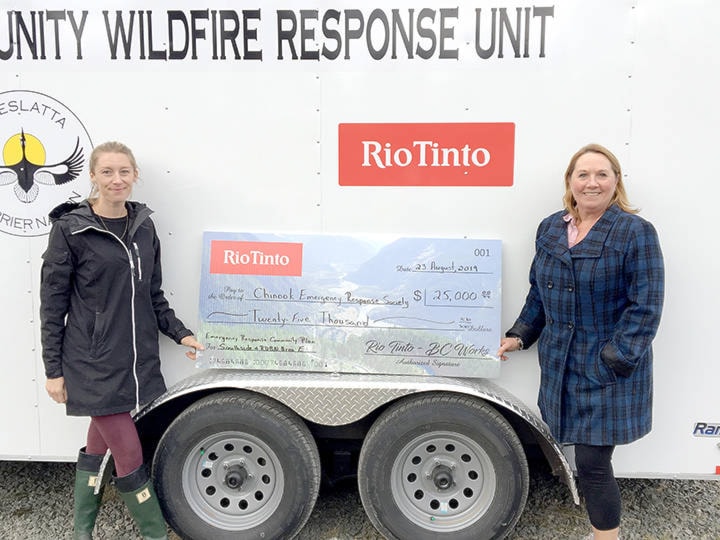The Chinook Emergency Response Society (CERS) is leading a project to install signs identifying where cellular phone service is available in remote areas.
The initiative aims to address communication difficulties, which proved particularly acute during last summer’s wildfires because to insufficient communications infrastructure in the region.
”Residents, fire fighters and emergency services workers were put at a great risk. There is not adequate cell service in many areas and it is anticipated that the building of more cell towers will be several years out,” as Scott Zayac, CERS spokesperson told Lakes District News.
”It was determined that appropriate road signage and mapping that indicates where cell coverage exists was necessary to help inform people who are living, visiting and working in the region.”
The Southside-based CERS formed last October to organize local communities, First Nations and businesses into a network and improve emergency preparedness.
READ MORE: Chinook Emergency Response Society helps Southside prepare for disaster
It has grown to around 50 members, held several meetings and attracted funding from sources including $25,000 from Rio Tinto Alcan, New Gold, the Burns Lake and District Community Foundation, and $30,000 from the Nechako-Kitamaat Development Fund to engage a project coordinator to develop a Community Action Plan (NKDF).
RELATED: NKDF gives almost $100,000 for Lakes District projects
The society has partnered with Rio Tinto Alcan for the signage project and plans to buy road signs and install them along major routes in the region.
It also seeks to “identify eight to 10 service areas…along [the] routes and possibilities are being discussed with community members as well as Lakes District Maintenance and other industry representatives that travel these roads regularly. These signs and the corresponding web sites, posters and brochures would clearly outline ‘Cellular Coverage/Service Zones’ throughout the region,” Zayac said.
The timeline and budget for the signage endeavour were not yet known.
CERS has been talking with the Regional District of Bulkley-Nechako and the Ministry of Transportation to help coordinate the scheme.
The Ministry acknowledged that cellular service is unreliable in many remote and rural parts of the province, and that as technology improves expectations might rise over service reliability.
It is also receptive to the type of project CERS is leading.
“While the Ministry of Transportation and Infrastructure has not posted signage about cellular service to date, we are open to discussions with local governments and organizations about this possibility,” said a spokesperson.
The Ministry has worked with ICBC and Telus to install free Wi-Fi at 12 rest areas across British Columbia, including at Boulder Creek on Highway 16 - 53 kilometres west of Hazelton - and at Glacier View on Highway 16 - 7 km north of Smithers, the spokesperson added.
Blair McBride
Multimedia reporter
Send Blair an email
Like Lakes District News on Facebook
